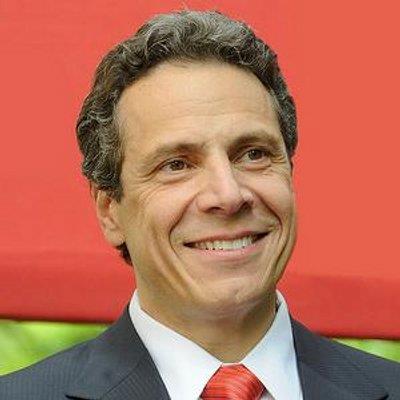
Bolster New York's Legacy of Environmental Protection
Allocate $300 Million for Environmental Protection Fund – Highest in State History and More Than Double Since 2011Improve Downstate Water Infrastructure by Making Critical Investments in Sewer Systems and Supporting Bay Park Outfall Pipe
Governor Cuomo unveiled the third signature proposal of his 2016 agenda
– a number of initiatives to bolster New York’s legacy of
environmental protection. The Governor announced that New York State will
allocate $300 million for the State’s Environmental Protection Fund
– the highest amount ever for the fund and more than double the
fund’s level when the Governor first took office. The Governor also
announced two major investments in water infrastructure in Suffolk and
Nassau Counties. These announcements were detailed earlier today at an
event on Long Island.
This increase will provide record funding for urgent environmental investments,
adding resources for land acquisition, farmland protection, invasive species
prevention and eradication, waterfront revitalization, and an aggressive
environmental justice agenda. The Governor made this announcement at an
event in Nassau County.
“New York’s natural environment is one of our greatest assets
– so we are stepping up to protect it like never before,”
said Governor Cuomo. “This year we are going to make big investments that will protect
the environment and make our communities cleaner, greener and more resilient
for generations to come.”
The EPF offers wide ranging benefits to communities around the state and
plays an important role in preserving the state’s natural resources
and habitats. After years of funding cuts to the EPF, upon taking office
in 2011, Governor Cuomo stabilized the EPF by freezing the funding level,
even with a $10 billion budget deficit and has secured funding increases
ever year thereafter.
The EPF offers wide ranging benefits to communities around the state and
plays an important role in preserving the state’s natural resources
and habitats. After years of funding cuts to the EPF, upon taking office
in 2011, Governor Cuomo stabilized the EPF by freezing the funding level,
even with a $10 billion budget deficit and has secured funding increases
ever year thereafter.
State EPF Funding since 2011:
|
Year |
State EPF Allocation |
|
2011-12 |
$134M |
|
2012-13 |
$134M |
|
2013-14 |
$153M |
|
2014-15 |
$162M |
|
2015-16 |
$177M |
|
2016-17 |
$300M |
This year’s increase is more than double the $134 million dollar
EPF the Governor inherited when he took office in 2011. Funding to support
the increase will come from traditional funding sources. No funding from
Regional Greenhouse Gas Initiative proceeds will be used to support the EPF.
“Time and time again Governor Cuomo has demonstrated his commitment
to restoring and protecting the state’s environment, including new
initiatives to position New York as a national leader on combatting climate
change, the most pressing environmental issue of our time,”
said Department of Environmental Conservation Acting Commissioner Basil Seggos. “With this unprecedented commitment to establishing a $300 million
Environmental Protection Fund, Governor Cuomo is solidifying his environmental
legacy for generations to come. I applaud Governor Cuomo for this historic
commitment to preserving New York’s incredible and economically
important natural resources.”
Created in 1993, the EPF was established to provide funding for the broad
categorical areas of
Solid Waste,
Parks and Recreation and
Open Space. The EPF funds land acquisition, farmland protection, waterfront revitalization,
municipal recycling, local government assistance to improve wastewater
treatment plants and municipal parks. Many EPF-funded programs support
innovative programs to solve environmental challenges and benefit municipal partners.
The EPF also supports the stewardship of public lands, including state
parks and millions of acres of public lands throughout the state. Through
partnerships with volunteer organizations, state agencies use stewardship
funding to manage trails and lands, protect natural resources, preserve
wildlife habitats, make critical capital improvements at parks and campgrounds,
educate students about conservation and provide access to persons with
disabilities.
Improve Water Quality on Long Island
Septic systems across Suffolk County discharge excess nitrogen resulting
in contaminated groundwater and stormwater, degrading vital ecosystems,
threatening public health, harming coastal wetlands and hindering vacation
economies.
Governor Cuomo is therefore advancing a transformative initiative to connect
nearly 10,000 Suffolk County households currently on septic systems to
state-of-the-art sewer systems. This historic build-out of sewer infrastructure
will ensure that household sewage is properly treated—dramatically
improving water quality and thereby restoring critical habitats, enhancing
protective natural buffers, and supporting vibrant fishing and tourism
economies. Beyond new sewer systems, the State is actively supporting
the development and testing of improved nitrogen-removing advanced individual
septic systems.
This initiative is expected to cost more than $388 million—of which
the Governor has already secured nearly $122 million though state and
federal sources. The State is actively pursuing $266 million in funding
from the Federal Emergency Management Agency, and in September received
an encouraging Phase 1 approval to proceed with project planning. Environmental
review is already underway for key watersheds, and construction is expected
to begin in 2018.
Bay Park Outfall Pipe
In the wake of Superstorm Sandy, the Governor Cuomo invested $831 million
in federal Sandy recovery dollars to ensure that the plant was not simply
built back – but built back better. The state is investing $191
million in state and federal resources for the Bay Park outfall pipe,
and pursuing $150 million more through the federal National Disaster Resilience
Competition. The outfall is a long overdue project that will protect the
Western Bays from high levels of nitrogen.
Upon completion of the outfall pipe construction, the state will fund
a detailed technical analysis to determine if additional treatment measures
may be needed to further reduce nitrogen pollution.
